Boils on: Boils (Skin Abscesses) Pictures, Treatment, Causes & Symptoms
What are the symptoms of boils? How can boils be treated? What causes boils to develop? Find the answers to these questions and more in this comprehensive guide.
Understanding Boils: An Overview
Boils, also known as skin abscesses, are painful, pus-filled bumps that develop on the skin. They are typically caused by a bacterial infection and can occur anywhere on the body, but are most common in areas with hair follicles, such as the face, neck, armpits, and buttocks. Boils can range in size from a pea to a golf ball and can be accompanied by other symptoms like fever, fatigue, and swollen lymph nodes.
Causes of Boils: Identifying the Culprits
The primary cause of boils is a bacterial infection, typically from the Staphylococcus aureus (staph) bacteria. This bacteria can enter the skin through a small cut, scratch, or other break in the skin and proliferate, leading to the formation of a boil. Other factors that can increase the risk of developing boils include:
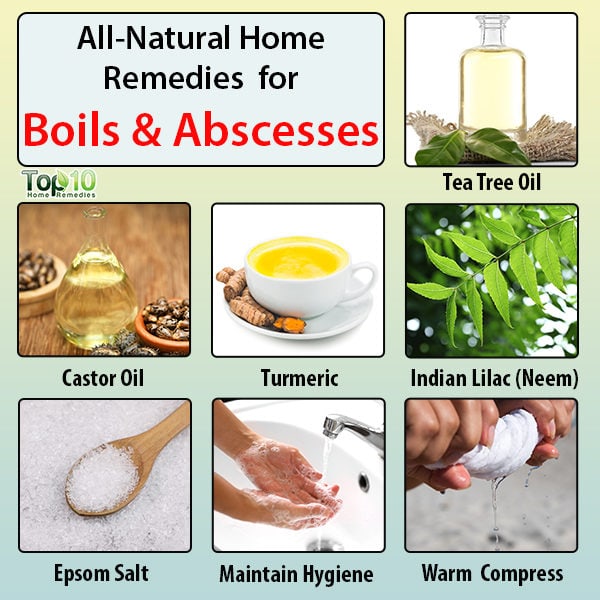
- Poor hygiene or a weakened immune system
- Diabetes or other chronic medical conditions
- Friction or irritation from clothing or other sources
- Sharing personal items like towels, razors, or clothing
Recognizing the Symptoms of Boils
The most common symptom of a boil is a painful, red, and swollen lump on the skin. As the boil matures, it may develop a white or yellow tip, indicating that pus has accumulated. Other symptoms can include:
- Fever
- Fatigue
- Swollen lymph nodes
- Itching or burning sensation around the boil
Treating Boils: Effective Strategies
The treatment of boils typically involves a combination of self-care and medical intervention. Here are some effective strategies for treating boils:
- Apply warm compresses to the boil several times a day to help draw out the pus and encourage drainage.
- Avoid touching, picking, or popping the boil, as this can spread the infection.
- Take over-the-counter pain medication, such as ibuprofen or acetaminophen, to alleviate pain and discomfort.
- Seek medical attention if the boil is not improving, is large or painful, or if you have a fever, as you may need antibiotic treatment.
- In some cases, a healthcare provider may need to surgically drain the boil to remove the pus and promote healing.
Preventing Boils: Strategies for a Healthier Skin
While boils can be difficult to prevent entirely, there are several steps you can take to reduce your risk of developing them:
- Practice good hygiene, including regular handwashing and keeping the skin clean.
- Avoid sharing personal items like towels, razors, or clothing with others.
- Manage any underlying medical conditions, such as diabetes, that can increase the risk of boils.
- Wear loose, breathable clothing to reduce friction and irritation on the skin.
- Maintain a healthy immune system through a balanced diet, exercise, and adequate sleep.
Boil Complications: When to Seek Medical Attention
In most cases, boils can be managed at home with proper care and treatment. However, in some instances, boils can lead to more serious complications that may require medical intervention. These include:
- Recurrent or recurring boils
- Boils that are large, painful, or not improving with home treatment
- Boils that are accompanied by fever, chills, or other signs of systemic infection
- Boils that are located in sensitive areas, such as the face or groin
- Boils that are associated with a weakened immune system or chronic medical condition
If you experience any of these complications or are concerned about the severity of your boil, it is important to seek medical attention promptly to prevent the infection from spreading or worsening.
The Role of Antibiotics in Boil Treatment
In some cases, boils may require antibiotic treatment, especially if the infection is severe or if the boil is not responding to home treatment. Antibiotics can help to kill the bacteria causing the infection and promote healing. However, it is important to note that antibiotics should only be used under the guidance of a healthcare provider, as improper or excessive use can lead to antibiotic resistance.
The specific antibiotic prescribed will depend on the severity of the infection and the type of bacteria involved. In some cases, a topical antibiotic ointment may be sufficient, while in more severe cases, oral or intravenous antibiotics may be necessary. It is important to follow the healthcare provider’s instructions carefully and complete the full course of treatment to ensure the infection is fully resolved.
How to treat boils and styes
Diseases & conditions
-
Coronavirus Resource Center
-
Acne
-
Eczema
-
Hair loss
-
Psoriasis
-
Rosacea
-
Skin cancer
-
A to Z diseases
-
A to Z videos
- DIY acne treatment
- How dermatologists treat
- Skin care: Acne-prone skin
- Causes
- Is it really acne?
- Types & treatments
- Childhood eczema
- Adult eczema
- Insider secrets
- Types of hair loss
- Treatment for hair loss
- Causes of hair loss
- Hair care matters
- Insider secrets
- What is psoriasis
- Diagnosis & treatment
- Skin, hair & nail care
- Triggers
- Insider secrets
- What is rosacea
- Treatment
- Skin care & triggers
- Insider secrets
- Types and treatment
- Find skin cancer
- Prevent skin cancer
- Raise awareness
- Español
Featured
Reduce summertime rosacea flare-ups
The sun, heat, and humidity can all trigger rosacea and lead to flare-ups. Find out how you can enjoy summer while reducing flare-ups.
Find out how you can enjoy summer while reducing flare-ups.
JAK inhibitors: A newer type of medication
JAK inhibitors are helping patients with alopecia areata, eczema/atopic dermatitis, psoriasis, and vitiligo. Here’s what you need to know.
Everyday care
-
Skin care basics
-
Skin care secrets
-
Injured skin
-
Itchy skin
-
Sun protection
-
Hair & scalp care
-
Nail care secrets
- Basic skin care
- Dry, oily skin
- Hair removal
- Tattoos and piercings
- Anti-aging skin care
- For your face
- For your skin routine
- Preventing skin problems
- Bites & stings
- Burns, cuts, & other wounds
- Itch relief
- Poison ivy, oak & sumac
- Rashes
- Shade, clothing, and sunscreen
- Sun damage and your skin
- Aprenda a proteger su piel del sol
- Your hair
- Your scalp
- Nail care basics
- Manicures & pedicures
Featured
Practice Safe Sun
Everyone’s at risk for skin cancer. These dermatologists’ tips tell you how to protect your skin.
These dermatologists’ tips tell you how to protect your skin.
Relieve uncontrollably itchy skin
Find out what may be causing the itch and what can bring relief.
Darker Skin Tones
-
Skin care secrets
-
Hair care
-
Hair loss
-
Diseases & Conditions
- Acne
- Dark spots
- Dry skin
- Light spots
- Razor bumps
- Caring for Black hair
- Scalp psoriasis
- Weaves & extensions
- Central centrifugal cicatricial alopecia
- Frontal fibrosing alopecia
- Hairstyles that pull can cause hair loss
- Acanthosis nigricans
- Acne keloidalis nuchae
- Hidradenitis suppurativa
- Keloid scars
- Lupus and your skin
- Sarcoidosis and your skin
- Skin cancer
- Vitiligo
- More diseases & conditions
Featured
Fade dark spots
Find out why dark spots appear and what can fade them.
Untreatable razor bumps or acne?
If you have what feels like razor bumps or acne on the back of your neck or scalp, you may have acne keloidalis nuchae. Find out what can help.
Cosmetic treatments
-
Your safety
-
Age spots & dark marks
-
Cellulite & fat removal
-
Hair removal
-
Scars & stretch marks
-
Wrinkles
-
Younger-looking skin
Featured
Laser hair removal
You can expect permanent results in all but one area. Do you know which one?
Do you know which one?
Scar treatment
If you want to diminish a noticeable scar, know these 10 things before having laser treatment.
Botox
It can smooth out deep wrinkles and lines, but the results aren’t permanent. Here’s how long botox tends to last.
Public health programs
-
Skin cancer awareness
-
Free skin cancer screenings
-
Kids’ camp
-
Good Skin Knowledge
-
Shade Structure grants
-
Skin Cancer, Take a Hike!™
-
Awareness campaigns
-
Flyers & posters
-
Get involved
- Lesson plans and activities
- Community grants
Featured
Free materials to help raise skin cancer awareness
Use these professionally produced online infographics, posters, and videos to help others find and prevent skin cancer.
Dermatologist-approved lesson plans, activities you can use
Free to everyone, these materials teach young people about common skin conditions, which can prevent misunderstanding and bullying.
Find a dermatologist
-
Find a dermatologist
-
What is a dermatologist?
-
FAAD: What it means
-
How to select a dermatologist
-
Your digital health
-
Prior authorization
-
Dermatologists team up to improve patient care
- Finding accurate health information
- Health apps
- Wearable medical devices
- Telemedicine
- Protect your information
Featured
Find a Dermatologist
You can search by location, condition, and procedure to find the dermatologist that’s right for you.
What is a dermatologist?
A dermatologist is a medical doctor who specializes in treating the skin, hair, and nails. Dermatologists care for people of all ages.
Vaginal Boil – What It Looks Like, Treatment, According To Gynos
When checking out your area down there, you may notice a few hairs reminding you it is time to book that wax, some razor bumps, and maybe even a pimple here or there. What if you notice a really big bump that looks like a blister? Don’t worry—you may be dealing with something called a vaginal boil.
Wait, what’s that? A vaginal boil is a pus-filled bump that develops when a hair follicle becomes infected, according to The Cleveland Clinic. It can pop up in places near the vagina and can sometimes become painful, red, and swollen. The good news is most vaginal boils resolve on their own with home treatment.
Bumps and lumps always make people nervous because the mind goes immediately to the worst possible thing, says Alyssa Dweck, MD, an ob-gyn in Westchester County, New York—like a type of cancer or a sexually transmitted infection (STI). But “most vulvar bumps are benign and in fact quite common,” Dr. Dweck says.
Now, let’s get a little bit more specific about vaginal boils The following is what you need to know about the condition, including what it is exactly and how to treat it safely.
Meet the expert: Alyssa Dweck, MD, is an ob-gyn in Westchester County, New York, and author of The Complete A to Z for Your V. Meghan Klavans, MD, is an ob-gyn at Rush University Medical Center in Chicago. Sherry Ross, MD, is a gynecologist with 25 years of experience in Santa Monica, California.
What exactly is a vaginal boil?
Boils are infections that occur in the skin and hair glands, Dr.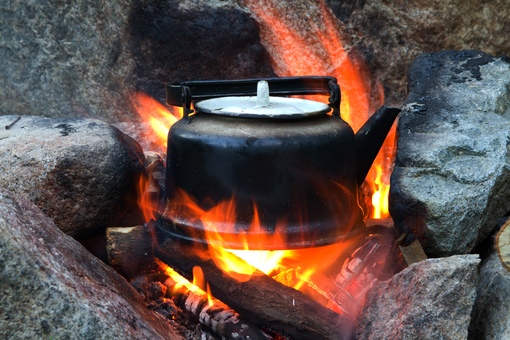 Dweck says. “They are puss-filled and similar to a pimple,” she notes. Visually they will look red or swollen, and you might even see pus oozing out of the boil, if it’s in its later stages.
Dweck says. “They are puss-filled and similar to a pimple,” she notes. Visually they will look red or swollen, and you might even see pus oozing out of the boil, if it’s in its later stages.
vinisouza128 / 500px//Getty Images
Know that “vaginal” boils are more likely to form on the vulva rather than near the vaginal opening or inside the vaginal canal, Dweck says. That means you’ll find vagina boils on the soft outer lips (the labia) or near where the vagina meets your inner legs (where lots of rubbing or chafing might occur).
Vaginal boils are quite common and, again, they are often benign, Dr. Dweck says.
How do you know it is a vaginal boil and not a vaginal cyst, a closed pocket of tissue on or near the vagina? A vaginal cyst is usually filled with fluid, and it’s painless, slower growing, and smaller in size, says Meghan Klavans, MD, an ob-gyn at Rush University Medical Center in Chicago.
What about genital herpes? This STI generally appears as one or more blisters around the genital area, Dr. Klavans says, and the blisters break and leave behind painful, ulcerated lesions.
What are the symptoms of a boil in the vaginal area?
Again, vagina boils are red, pus-filled, and bulbous lesions, Dr. Dweck says, likely resembling a large pimple on your nether regions. (If you’re having trouble viewing your vagina boil, try grabbing a hand mirror and holding it underneath your vulva to get a better look.)
Related Story
- 14 Reasons Your Vagina Is So Damn Itchy
When it comes to symptoms, you’ll likely feel a vagina boil before you see it. Physically they will likely feel painful or bruise-like, Dr. Dweck says, and might also be inflamed and come in multiples rather than just a single boil.
Why does a boil surface in the area around the vagina anyway?
If you’re someone who regularly removes your pubic hair or the leg hair around your vulva area, you might be more prone to vaginal boils than others, Dr. Dweck notes. This is especially true shortly after the hair removal, especially if you opt in to waxing or shaving.
Dweck notes. This is especially true shortly after the hair removal, especially if you opt in to waxing or shaving.
“Boils tend to form in hair-bearing areas that are moist and not easily aerated,” Dr. Dweck says. This makes your vagina the perfect storm kind of area for vaginal boil formation, given that it typically has a breadth of hair growth and can be a bit constricted in tight underwear or clothing.
Related Story
- 13 Best Breathable Pairs Of Underwear, Per Ob-Gyns
You can also get boils for similar reasons on other areas of your body, Dr. Dweck says, most commonly near or on your underarms (another hairy, sweaty, and must-prone region).
How long does it take for a vaginal boil to go away?
In short, a vaginal boil will typically take anywhere from a few days to two weeks to go away. It may disappear on its own or, like a pimple, it may even come to a head, Dr. Dweck says.
Dweck says.
A boil may even pop completely on its own, excreting a whitish, pus-like material, she says. At times you might find blood coming out of it. If this happens, be sure to disinfect the area, apply healing ointment like Neosporin and, if possible, cover the boil with a bandage.
Definitely avoid any further hair removal at this point, as it can only further irritate your vaginal boil situation. You’ll likely need to wait for the boil’s pus to drain completely before you notice any healing occurring, Dr. Dweck notes.
Are there any ways to get rid of a vaginal boil fast?
If you come down with a vaginal boil, definitely do not try to squeeze or pop it yourself—that can make the pain and inflammation worse, and it’s likely that the infection will spread, says Sherry Ross, MD, an ob-gyn in Santa Monica, California.
Related Story
- The Best Cleansers For Avoiding Vaginal Irritation
Instead, use a warm compress to relieve discomfort, wear loose pants and underwear so you’re not restricting the area, and give it time to heal, Dr. Ross says. As mentioned, you can also apply a topical antibiotic ointment and cover it with a bandage to speed up the process, Dr. Dweck says.
Ross says. As mentioned, you can also apply a topical antibiotic ointment and cover it with a bandage to speed up the process, Dr. Dweck says.
All in all, your vaginal boil should drain spontaneously on its own, Dr. Dweck says.
Dr. Klavans also recommends taking a sitz bath two to three times per day. A sitz bath is a soothing warm soak specifically for your perineal area, the region between your legs and including your anus and vagina. It’s made up of water and baking soda (sodium bicarbonate) or salt.
If antibiotic therapy is needed for a vaginal boil, your doctor will prescribe one for you, Dr. Klavans says.
Should I be worried about any complications of a boil?
Vaginal boils have the potential to develop into a severe skin infection called cellulitis, Dr. Dweck says, although it’s unlikely.
Cellulitis is caused by a crack or lesion that allows for bacteria to come through the skin barrier, according to the Mayo Clinic.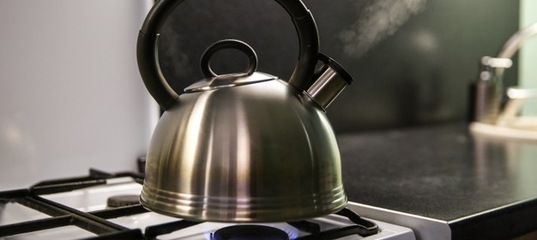 This is why you should definitely not pop or squeeze a vagina boil. If left untreated, cellulitis spreads rapidly to your lymph nodes, which can be life-threatening.
This is why you should definitely not pop or squeeze a vagina boil. If left untreated, cellulitis spreads rapidly to your lymph nodes, which can be life-threatening.
And while it’s super rare, it’s also possible for an open vaginal boil to allow for the contraction of bacteria that could lead to sepsis or a blood infection, Dr. Dweck says. Again, these issues are caused by harmful bacteria making its way past your skin barrier—so steer clear of rupturing the vagina boil, and you should be just fine.
When should I see a doctor for a boil?
If your vaginal boil persists after days and weeks, is growing larger in size, is accompanied by red streaks around the skin, or you develop a fever, chills, or flu-like symptoms, visit your gynecologist for medical attention, Dr. Dweck says. They may prescribe antibiotics and, if necessary, safely lance and drain the boil to help get rid of the infection, Dr. Ross says.
Ross says.
Jenn Sinrich
Jenn Sinrich is an experienced writer, digital and social editor, and content strategist covering health, fitness, beauty, and relationships. After a decade-long career in New York City working in the magazine industry and at a myriad of digital publications, Jenn returned to her hometown just north of Boston to pursue freelancing full-time.
Ashley Martens
Writer
Ashley Martens is a Wellness Writer based in Chicago, Illinois. With a digital marketing background and her knowledge of general nutrition and a lifelong passion for all things health and wellness, Ashley covers topics that can help people live happier and healthier lives.
why, what to do if it boils in the tank, how to prevent boiling
Contents
- Composition and tasks of the cooling system
- Antifreeze boiling symptoms
- Why does the coolant boil
- What happens if antifreeze boils
- Coolant boil prevention
Optimum temperature conditions for the operation of an internal combustion engine, even under severe operating conditions, are provided by the cooling system. Efficient heat removal from the cylinder block and parts of the piston group depends on the quality and properties of the antifreeze circulating in the circuit. Due to a malfunction of the system elements, as well as the poor quality of the additives, the coolant may boil. The consequences of overheating of the coolant are very serious for the motor. If the correct measures are not taken in a timely manner, the engine will lose power and fail. To restore the engine to working capacity, an expensive overhaul will be needed, so every driver must know how to control the coolant temperature and what to do if the antifreeze boils in the car.
Efficient heat removal from the cylinder block and parts of the piston group depends on the quality and properties of the antifreeze circulating in the circuit. Due to a malfunction of the system elements, as well as the poor quality of the additives, the coolant may boil. The consequences of overheating of the coolant are very serious for the motor. If the correct measures are not taken in a timely manner, the engine will lose power and fail. To restore the engine to working capacity, an expensive overhaul will be needed, so every driver must know how to control the coolant temperature and what to do if the antifreeze boils in the car.
Composition and tasks of the cooling system
To remove excess thermal energy from the engine, a liquid-type cooling system with a circulating coolant is provided. High-quality antifreeze evenly cools the power unit and releases heat into the atmosphere. In order for the cooling system to perform its functions, the following components are structurally provided:
- channels in the cylinder block forming a “cooling jacket”;
- pump for coolant circulation in the circuit;
- radiator for transferring heat from antifreeze to the atmosphere;
- fan to enhance air flow;
- interior heater heat exchanger;
- coolant temperature sensor;
- thermostat and expansion tank.

The operation of the cooling circuit is controlled by an electronic unit that receives signals from sensors and sends impulses to turn on the fan, thermostat heater and other additional devices. In good condition, the cooling system with circulating antifreeze successfully maintains the temperature regime of the engine, as well as automatic transmission (in some models).
In addition, thanks to the hot coolant, the air in the vehicle interior is heated in order to maintain a comfortable microclimate for the driver and passengers. Also, the coolant can be used in the machine to cool the air flow supplied to the turbine and exhaust gases in the recirculation device. For the power unit are provided:
- increased resource of trouble-free operation of the motor;
- economical fuel consumption;
- engine performance;
- maximum power;
- trouble-free vehicle operation in hot climates.
Given the importance of maintaining optimum engine temperature, vehicle owners should be aware of and identify the signs that antifreeze is boiling, and the negative effects it can have on the engine.
Symptoms of antifreeze boiling
If the driver timely detects the heating of the coolant to a critical temperature at which boiling begins, then the destruction of the cylinder block and deformation of the parts of the piston group can be avoided. To this end, in the technical documentation, automakers recommend that the driver constantly monitor the heating of the coolant in the cooling system while driving a car (on a trip). You can monitor the temperature in the circuit using the control device on the control panel. When the arrow or digital indicator tends to the red zone, this is the first sign of system overheating. When antifreeze boils, the driver must immediately stop the car and turn off the engine in order to understand the cause of the malfunction. It is unacceptable to operate a car with boiling coolant.
The operation of the instrument or the overheat warning lamp (on some models) depends entirely on the health of the temperature sensor installed in the cooling jacket of the cylinder block. If the control device on the control panel is faulty, then the driver must pay attention to the following signs:
If the control device on the control panel is faulty, then the driver must pay attention to the following signs:
- puffs of steam come out from under the bonnet;
- floating idle speed;
- power reduction, acceleration time increase;
- increasing noise while the engine is running at different speeds;
- sonorous (metallic) rumble;
- sudden stop of the engine;
- the composition has acquired a dark color;
- a white coating has formed on the electrodes of the candles or cracks have appeared;
- Antifreeze leaks from under the cylinder head gasket.
If the antifreeze boils and the engine heats up to a critical temperature, then when the car accelerates, the dynamics will deteriorate due to detonation (explosions in the cylinders). In the expansion tank, flakes and oil stains appear in the coolant due to engine oil entering the cooling circuit. Such a defect occurs due to the burning of the cylinder head gasket due to the heating of the antifreeze to the boiling point. If coolant enters the crankcase, foam and emulsion can be seen on the dipstick and on the bottom of the oil filler cap.
If coolant enters the crankcase, foam and emulsion can be seen on the dipstick and on the bottom of the oil filler cap.
Why coolant boils
High-quality antifreeze designed for the car cooling system has a high boiling point of at least 110 °C. With this property, the coolant provides the optimal temperature regime for the operation of the power unit, including at full load. An increase in the temperature of the coolant to a critical value and boiling of antifreeze is possible for several reasons.
- The radiator fan does not turn on due to a burned out electric motor, a relay or control unit malfunction.
- The centrifugal pump (usually the bearing) is out of order and the coolant does not move in the cooling circuit, including through the radiator.
- The thermostat is jammed, as a result of which the coolant circulates through the cooling jacket and the interior heater heat exchanger, therefore it cannot transfer heat to the atmosphere.

- Formation of coolant leakage points. For each engine model, a certain amount of coolant is calculated, which is necessary for efficient heat removal. When the level in the system decreases, the antifreeze boils. A drop in the level is also observed as a result of the natural evaporation of the coolant, since the composition, in addition to alcohol, includes water.
- Faulty sensor (relay) responsible for turning on the fan motor. Typically, the sensor is set to turn on at an antifreeze temperature of about 90–95 ° C. When the coolant reaches this temperature, the fan turns on and the heat exchange process in the radiator is more efficient.
- Radiator honeycombs clogged with debris and dust. Air cannot pass freely through the cells, so the coolant does not cool completely when it circulates in the radiator. Clogging can occur due to the ingress of fluff, leaves, insects and dirt.
- Violation of the circulation of the coolant due to an air lock.
 Air enters the system when the antifreeze is not properly filled into the circuit or when the coolant level in the expansion tank drops below the min mark.
Air enters the system when the antifreeze is not properly filled into the circuit or when the coolant level in the expansion tank drops below the min mark.
Antifreeze also boils due to the difficult movement of the technical fluid in the circuit, due to the formation of sediment and plaque on the inner walls of the channels of the cooling jacket and nozzles. Such a malfunction occurs when a coolant with low-quality additives or a composition that is incompatible with the coolant poured into the system is added to the coolant circuit.
What happens if the antifreeze boils
The effects on the engine when the coolant reaches boiling point can be moderate to critical. It all depends on the timeliness of the actions of the driver. If the driver noticed in time that the indicator arrow on the dashboard went into the red zone, which means that the antifreeze had boiled, immediately stopped and turned off the engine, then moderate malfunctions are possible.
- Cylinder head gasket damage.
- Violation of compression in the cylinders due to deformation of the piston rings.
- Reflow piston mirror.
- Curvature of the BC head.
- Compression loss in cylinders.
- Defective intake and exhaust valves.
If the engine overheated due to the boiling of antifreeze and spontaneously stopped (jammed), then a major overhaul or a complete replacement of the power unit will be required to restore performance, if the repair is not economically feasible due to the high cost. Consequences for the motor as a result of critical overheating:
- piston burnout;
- fusion and rupture of compression rings;
- ingress of molten alloys on the cylinder walls;
- melting of the crankshaft liners;
- the appearance of cracks in the cylinder block;
- crankshaft jamming;
- piston damage to the cylinder block walls.
Determining the reason why the antifreeze boils in the tank, you can fix the problem and prevent an engine overhaul.
Prevention of coolant boiling
To prevent boiling of antifreeze and overheating of the power unit, the driver is advised to follow simple rules.
- While driving, constantly monitor the coolant temperature using the indicator on the dashboard.
- Check the coolant level in the expansion tank before every long journey and regularly when driving in town.
- Pay attention to the presence of coolant under the vehicle after parking.
- At the first sign of boiling of the coolant, turn off the engine and do not start until the cause of overheating is clarified.
Also, in order to prevent the antifreeze from boiling, only a certified coolant with high-quality additives recommended by the manufacturer should be poured into the system. We offer a wide range of high quality Sintec coolants of various types for gasoline and diesel engines of all vehicles. Having figured out why the antifreeze is boiling, and having eliminated the cause of the malfunction, you can choose to fill the car with a coolant that meets the requirements of the manufacturers and is characterized by a high boiling point.
What to do if the car boils :: Autonews
adv.rbc.ru
adv.rbc.ru
adv.rbc.ru
Autonews
TV channel
Pro
Investments
Events
+
New economy
Trends
Real estate
Autonews
Sport
Style
National projects
City
Crypto
Debating club
Research
Credit ratings
Franchises
Newspaper
Special projects St.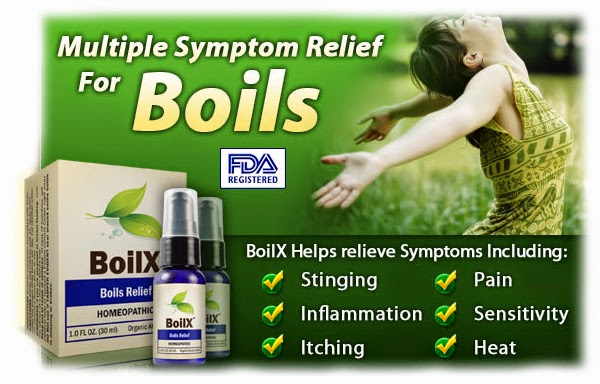 Petersburg
Petersburg
Conferences St. Petersburg
Special projects
Checking counterparties
Library
ESG index
Policy
Economy
Business
Technology and media
Finance
RBC CompanyRBC Life
adv.rbc.ru
adv.rbc.ru
See also
Photo: Zamir Usmanov / Russian Look
Not a single car, even the most modern one, is immune from boiling. The reasons can be different: from technical malfunctions to the inattention of the motorist. Remember that the consequences, as a rule, are disastrous: violation of the geometry and destruction of the internal elements of the engine. All this leads to costly repairs. Let’s figure out what to do if the engine still boils, and how to avoid serious damage.
Remember that the consequences, as a rule, are disastrous: violation of the geometry and destruction of the internal elements of the engine. All this leads to costly repairs. Let’s figure out what to do if the engine still boils, and how to avoid serious damage.
A failed thermostat, a broken drive belt, low antifreeze levels are all causes that can cause the engine to boil. Most often we are talking about a lack of antifreeze, so at least once every two weeks it is better to control the level of coolant.
On older machines, clogged cooling cells or a broken fan can often be a problem. In addition, overheating can be triggered by malfunctions in the ignition system, faulty spark plugs and low-quality fuel.
During trips, and especially when idle with the engine running in long summer traffic jams, the driver must follow the temperature gauge on the instrument panel. 85-90 degrees are considered normal. An increase in temperature by 5-10 degrees is already considered potentially dangerous.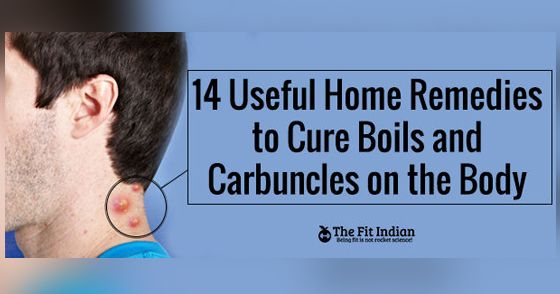
Photo: Michael Hartmann / imagebroker.com / Global Look Press
When the coolant reaches 100 degrees, the coolant begins to boil, and steam begins to come out from under the hood of the car. At the same time, it should be remembered that the temperature of the coolant in the system may change due to the traffic situation (idle traffic in summer, driving at low speed). In this case, it is important to observe temperature fluctuations within certain limits, however, after turning on the fan, the arrow will drop again.
There are two scenarios: the engine overheated, but not yet boiled, and overheated when steam began to pour from under the hood. In the first case, a boiling car must be immediately stopped in a safe place, turn off the air conditioner and open the hood. In this case, you should not turn off the engine immediately – it is better to let it run at idle. Otherwise, the coolant stops moving through the system and boiled antifreeze can damage engine parts.
If steam comes out from under the hood, coolant is getting onto a hot cylinder block. The car must be turned off as soon as possible – a running engine can lead to jamming.
The easiest way to reset the temperature is to turn on the stove at full power. It sounds strange, but the heater will take some of the heat and play the role of an additional means of cooling the antifreeze. For summer time, sometimes a stop with an open hood for 40-50 minutes is enough.
Important! In no case should you open the cap of the expansion tank or radiator – this can lead to a splash of boiling antifreeze and serious burns.
But in case of overheating, it is best to call a tow truck or tow the car to the nearest service.
It happens that the coolant temperature arrow quickly creeps up, but the radiator remains cold – we can talk about a jammed thermostat. In this case, it is better to drive to the service with the lowest possible load on the engine and the stove fan constantly on.



 Air enters the system when the antifreeze is not properly filled into the circuit or when the coolant level in the expansion tank drops below the min mark.
Air enters the system when the antifreeze is not properly filled into the circuit or when the coolant level in the expansion tank drops below the min mark.